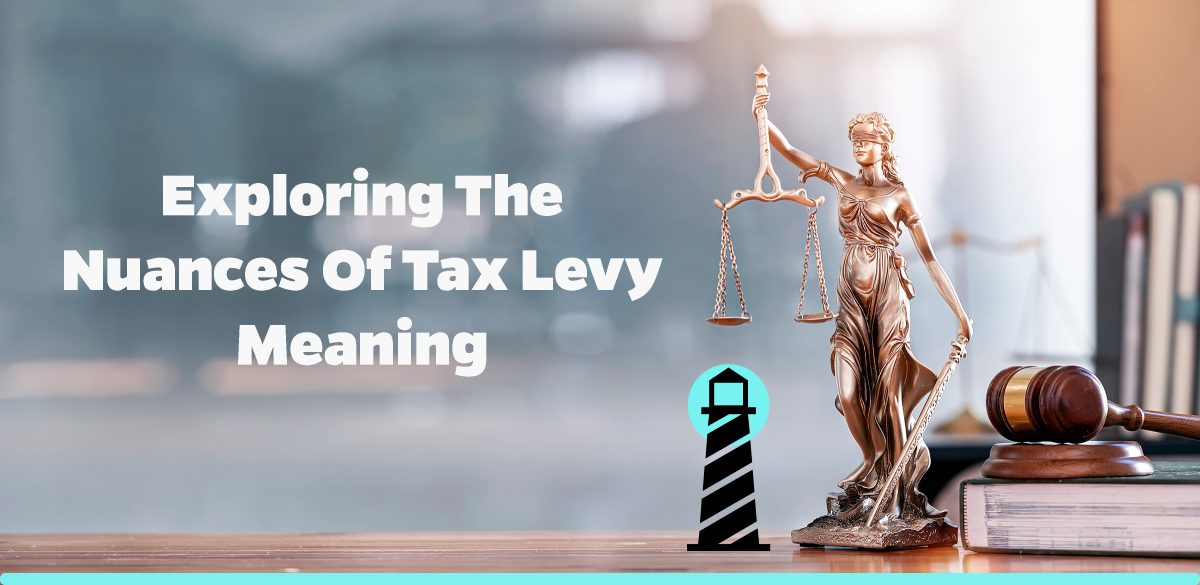Unraveling the Intricacies of Tax Levy Meaning
In the complex world of taxation, you may have encountered the term tax levy. It’s a subject that many taxpayers find intimidating because of its convoluted terminologies and intricate procedures. At Brightside Tax Relief, our goal is to educate our clients and readers, making these complicated matters less daunting. Hence, we decided to dissect the ‘Tax Levy Meaning’ to offer you a deeper understanding of what it implies and how it operates within the tax system.
A tax levy, simply put, is a legal seizure of a taxpayer’s property to meet an unpaid tax debt. It’s the most stringent action the Internal Revenue Service (IRS) can take against taxpayers who fail to meet their tax obligations. This action might mean that the IRS can seize and sell any tangible asset you own, such as a vehicle, home, or even financial assets like bank accounts and retirement accounts.
Here are the essential points to bear in mind about tax levies:
- Issued by the IRS: A tax levy is only issued by the IRS following a thorough evaluation of your financial situation. Not everyone with an unpaid tax due will face it.
- Exhaustion of Other Means: Before coming down to levy, several attempts will be made by the IRS to notify the taxpayer and resolve the issue.
- Right to Appeal: A taxpayer has rights, including fair notice and an opportunity to appeal the decision before the levy occurs.
Different Types of Tax Levies
Comprehending the ‘Tax Levy Meaning’ demands an understanding of its different types. So, let’s unravel the three most common forms of tax levies:
- Property Levy: This type of levy is where the IRS seizes physical properties such as cars, boats, houses, and sells them to recoup the tax debt.
- Bank Levy: In this circumstance, the IRS freezes your bank account and takes the funds needed to settle your debt.
- Wage Garnishment: Here, the IRS instructs your employer to withhold a portion of your wages to pay off your tax debt directly.
Each one of these levies has different implications and procedures, making it very significant to fully understand how each one works.
Tax Levy Vs. Tax Lien
A common confusion that persists among taxpayers is distinguishing a tax levy from a tax lien. Even though both are authoritative tools used by the IRS, they have different implications and uses. A tax lien serves as a legal claim against your property, while a tax levy goes a step further to seize and sell your property to settle the unpaid taxes. This distinction is crucial when dealing with the IRS and managing tax debt.
Avoiding A Tax Levy
Avoiding a tax levy is always advised because once it’s issued, it could have a significant impact on your finances, reputation, and peace of mind. Several steps can be taken to avoid a tax levy:
- Filing Tax Returns on Time: Always ensure to file your tax returns on time. This simple act can prevent a myriad of issues.
- Pay Your Taxes in Full: Fulfill your tax obligation in full every time. This will completely avoid any chance of a tax levy.
- Sign up for an Installment Agreement: If you cannot pay your tax dues, enter into an installment agreement with the IRS to pay your debt gradually over time.
Seeking Professional Help
When it comes to taxes, even the slightest error can lead to serious consequences. The tax levy process can become overwhelming for most taxpayers. Therefore, it’s always beneficial to have professionals like Brightside Tax Relief at your side. Our team of tax experts will guide you through every step, ensuring the best outcomes.
To further enrich your understanding of ‘Tax Levy Meaning,’ visit the IRS website for comprehensive information on this topic, directly from the official source. Remember, knowledge is power when it comes to managing your tax responsibilities.
With this in-depth exploration of the tax levy meaning, we hope your clarity and confidence have improved. By being educated, proactive, and seeking professional assistance, you can navigate through the nuances of the tax world effectively and without stress.






